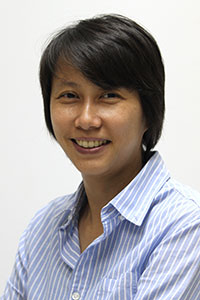
The 10 must-see cultural sites as announced by the Ministry of Culture have raised eyebrows and drawn criticism.
Most notably, critics have set their sights on Hinoki Land, a tourist destination in Chiang Mai inspired by -- as the name strongly suggests -- Japanese architecture.
The Cultural Promotion Department, under the Ministry of Culture, initially defended its controversial choice, reasoning that the destination deserves a place on the list due to its uniqueness. The Japanese-style structure is built from fragrant Hinoki wood.
The remaining, less controversial, sites like Doi Tung in Chiang Rai, the Ancient City in Samut Prakan, Jim Thompson's farm in Nakhon Ratchasima, Prasat Sajatham or Sanctuary of Truth in Chon Buri, and Phuket Fantasea in Phuket are famous among both Thai and foreign tourists.
In its defence, the department explained that the list was created to boost the local economy. It also details the six-point criteria used to shortlist these destinations. For example, one criterion states that each destination must be educational and stimulate the creative economy and that it foster cooperation between the public and private communities. Last but not least, it states that each destination must be popular among Thais and foreigners.
The department claims that Hinoki Land meets these benchmarks as it is a place where tourists can learn about Japanese culture without having to travel all the way to Japan. Due to its popularity, the site creates jobs and provides income to the local communities located nearby.
I checked the fan pages of the destinations on this list, including that of Hinoki Land, and got the impression the department wants people to appreciate foreign cultures and practise environmental friendliness.
Looking at the criteria, how could Hinoki Land not be on the list? It's a domestic site featuring Japanese-style structure -- probably inspired by Kyoto's Fushimi Inari Taisha. Visitors to the site have the opportunity to learn how to wear a kimono and taste green tea-flavoured ice cream -- without having to spend on air tickets and accommodation. More importantly, it gives environmentally conscious tourists an opportunity not to contribute to the carbon footprint associated with foreign travel.
In addition to Hinoki Land, the list also features Nongnooch Garden Pattaya where tourists can catch a glimpse of the fake Stonehenge, recognised as one of the seven wonders of the world. The site is also littered with giant statues in the form of dinosaurs and insects as well as a collection of rare, expensive automobiles.
However, I am not sure how the department chose Phuket's Fantasea. Perhaps it wants to promote gender tolerance as the place is well-known for its transvestite shows and the cuteness of Thai elephants on stage.
While writing this, I have come to learn that the department is thinking about reviewing the list.
Considering how Japanese culture has gained recognition from the Ministry of Culture, I couldn't help but check if any of the Thai destinations have received honours from Japanese tourism agencies. What I found instead was an award for the Tourism Authority of Thailand for being an excellent business partner. There were several other awards for local businesses or communities including prizes for entrepreneurs that stimulate local communities or those that apply deep-rooted culture in promoting tourism.
Anyway, this made me, as a Thai, feel privileged and proud. The Japanese people lack the opportunity to learn about foreign cultures in their own country.
Culture certainly has a role in tourism.
Those taking a walk near Patpong would have experienced being ushering in to have a view at the "ping pong show." I remember a colleague from Germany who visited Bangkok years ago and after seeing one of those performances asked me with a straight face if the show which drew many tourists was also "Thai culture."
Well, if we only considered something that is popular and well-accepted in society as "culture", not to mention that it generates quite an impressive income for those involved in the business, though not quite creative economy, the extraordinary "ping pong" show acrobatics may find their way to the list.
The show, like massage parlours, is there as part of tourism, even though the authorities pretend not to see it.
Frankly speaking, I don't think that the Culture Ministry should list cultural sites based on their popularity or potential for income generation. Otherwise, there will end up just being a list of popular entertainment or recreation spots in Thailand. The department should make it a point not take on the role of tourism promotion.
If the Cultural Promotion Department is really going to revise the list, I'd humbly suggest that it provide places where real local culture can be experienced even if the place is not popular or overlooked. When one travels across the country, they will find numerous unique and culturally memorable places that have not been listed on tourist guidebooks or the department's listing of "cultural sites".
However, they are certainly qualified to be considered even though they are not money-making machines.
Perhaps the department should try to give itself some orientation about what culture means?
Sirinya Wattanasukchai is a columnist, Bangkok Post.
